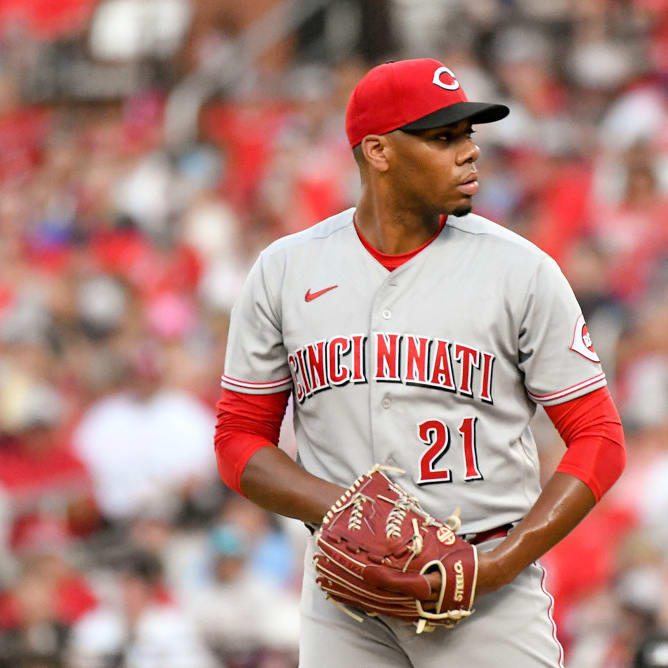This article is part of our The Z Files series.
Last week, a novel way of designing pitching tiers was discussed. This week, tiers will again be the focus, but in a completely different vein. Instead, how to use tiers to manage money in auction formats will be explained.
It must be emphasized that while the tiers are set up in terms of target bid numbers (still refuse to call it value), the primary purpose is money management. Sure, if you're really intimate with the player pool you can base your bidding off the tiers, but even I glance at the actual number I have associated with each player while bidding. And even then, hopefully you realize that number is not a strict stop sign and what you're willing to pay is contextual.
The biggest faux pas in auctions is leaving an excess of money on the table or overpaying for lesser talent because you have the budget and there's no one else of consequence left to purchase. A process which helps fend this off involves mapping out how much you expect to pay for each player with the sum totaling 260 (or whatever your league uses as a budget). These prices are just a guide… a jumping-off point. YOU ARE NOT BOUND TO THEM AT ALL.
Yes, I was yelling. When I explain this system, many misinterpret and adhere too closely to the numbers on the lines. As will soon be explained, knowing your addition and subtraction tables will become paramount.
To emphasize the fluidity of the lines,
Last week, a novel way of designing pitching tiers was discussed. This week, tiers will again be the focus, but in a completely different vein. Instead, how to use tiers to manage money in auction formats will be explained.
It must be emphasized that while the tiers are set up in terms of target bid numbers (still refuse to call it value), the primary purpose is money management. Sure, if you're really intimate with the player pool you can base your bidding off the tiers, but even I glance at the actual number I have associated with each player while bidding. And even then, hopefully you realize that number is not a strict stop sign and what you're willing to pay is contextual.
The biggest faux pas in auctions is leaving an excess of money on the table or overpaying for lesser talent because you have the budget and there's no one else of consequence left to purchase. A process which helps fend this off involves mapping out how much you expect to pay for each player with the sum totaling 260 (or whatever your league uses as a budget). These prices are just a guide… a jumping-off point. YOU ARE NOT BOUND TO THEM AT ALL.
Yes, I was yelling. When I explain this system, many misinterpret and adhere too closely to the numbers on the lines. As will soon be explained, knowing your addition and subtraction tables will become paramount.
To emphasize the fluidity of the lines, I enter an auction with at least two, sometimes more potential patterns. Here's an example of a typical distribution:
Hitting: 40, 35, 25, 20, 15, 12, 12, 8, 5, 5, 3, 3, 1, 1
Pitching: 20, 15, 12, 10, 8, 5, 3, 1, 1
Here, 185 is dedicated to hitting with 75 for pitching, a 71:29 split.
But what if the top tier hitters are all going for huge prices? I'll have a second path without a $40 player, something like this:
Hitting: 30, 27, 25, 23, 20, 15, 12, 10, 10, 5, 3, 3, 1, 1
Pitching: 20, 15, 12, 10, 8, 5, 3, 1, 1
The split (and pitching lines) are the same but there are no studs with more budget allocated for very good hitters.
What if I want to buy an ace pitcher?
Hitting: 30, 25, 25, 20, 15, 15, 12, 10, 10, 5, 3, 3, 1, 1
Pitching: 30, 15, 12, 10, 8, 5, 3, 1, 1
This funnels $5 from hitting, bring the split to 69:31.
Once I buy my first couple of players, I decide which template I want to use and even then, I can easily adjust and swerve off of it. Remember it's only a starting point.
Let's say my first purchase is a $32 hitter and I know I'm not getting a stud pitcher. I'll take the middle path and adjust it to:
Hitting: 32, 25, 25, 23, 20, 15, 12, 10, 10, 5, 3, 3, 1, 1
Pitching: 20, 15, 12, 10, 8, 5, 3, 1, 1
Of course, I'll put the actual player on the $32 line. The adjustment is taking $2 from the $27 player and making him a $25 player. This is now my guide regardless of the rest of my buys.
Next I buy a $24 pitcher. Decision time... do I take $4 from hitting and add it to the $20 pitcher line or lower a different pitcher? Honestly, it doesn't matter since I can easily give the money back to hitting based on future purchases so for now, let's take it from some lower pitcher and adjust to:
Hitting: 32, 25, 25, 23, 20, 15, 12, 10, 10, 5, 3, 3, 1, 1
Pitching: 24, 15, 12, 8, 6, 5, 3, 1, 1
This is the basic idea, moving money around so the sum is always $260.
So where do the tiers come in?
By means of background, I'll tier each position in $5 increments. Players eligible at multiple positions are listed at each position. More often than not I'll see what tier the player is in and base my bidding off of that but occasionally I'll peek at the actual number.
The manner in which the tiers come in handy is by comparing the number of players left in a tier against the open lines in my bidding plan. If I have an open $25 line and there are only four players left in that tier, I better buy one or redistribute some of that $25 elsewhere. Keeping in mind in our ongoing example, the $32 hitting and $24 pitching lines are accounted for, let's say I buy a $26 batter and opt to eschew the remaining $25 player, the new scheme may look like:
Hitting: 32, 26, 20, 20, 20, 15, 15, 12, 10, 7, 3, 3, 1, 1
Pitching: 24, 15, 12, 8, 6, 5, 3, 1, 1
Maybe I buy a better closer than expected for $18 and see the $20 hitters are dwindling. The adjustment could be:
Hitting: 32, 26, 20, 20, 17, 15, 15, 12, 10, 7, 3, 3, 1, 1
Pitching: 24, 18, 12, 8, 6, 5, 3, 1, 1
The idea is to either make sure you fill each line before the inventory runs out or re-allot the funds elsewhere, making sure that there are ample players available to put on that line.
Everyone's mind works in different ways. Tracking the auction via these positional ranking tiers helps me visualize what's left and judge if I'm on course to spend all my money without chasing mediocrity for the sake of fully emptying my wallet. Your mileage may vary.
The tiers serve a few other ancillary purposes. As alluded to, I track the players purchased by crossing them off the tier. This helps keep my drafting materials to a minimum. Or, I can have the spreadsheet on the computer and highlight the cell of purchased players but I prefer the old-fashioned pen and paper method.
Another side benefit relates to price enforcing. This is a topic that deserves its own treatment... or at least a podcast segment. In the truest sense, you're only really price enforcing if you don't want the player you're bidding on to raise his cost. If all you're doing is bidding up a guy you're OK with getting stuck with, you're really not price enforcing. I doubt I have the reputation of being a price enforcer since my method is quite subtle. All I care about is getting the player into the tier where I have him ranked. If the player is purchased in a tier lower than where I have him listed, I didn't do my job. The only time I fail to push the player into the associated tier is when I simply cannot lock up that position as it will severely hinder my team construction plans going forward.
Speaking of team construction, while I don't put both an expected position and price on a hitting line, some of the prices are in sync with pockets of several players at that line and sometimes I'll pencil in a position if multiple players at that price are second baseman. An example how this ties into tiers is if there are several such pockets of second baseman and another of speedy outfielders, so I design the lines with this in mind, informally dedicating one or two to specific positions or statistics. If I am pretty sure I can land a cheap second baseman and someone in that plush tier will slide, I won't buy a more expensive second baseman unless he comes in a tier below his price. Similarly, if I expect to get a speedy outfielder in the $10-$15 range, I won't spend $20 on Ben Revere (but I will spend $16 and adjust my lines).
To wrap up, when some hear tier drafting, they think it's more about staying disciplined with pricing and sticking to a predetermined strategy. For me it's all about budget management and not being the one with enough money left on the table to buy a round of drinks after the auction is over.










